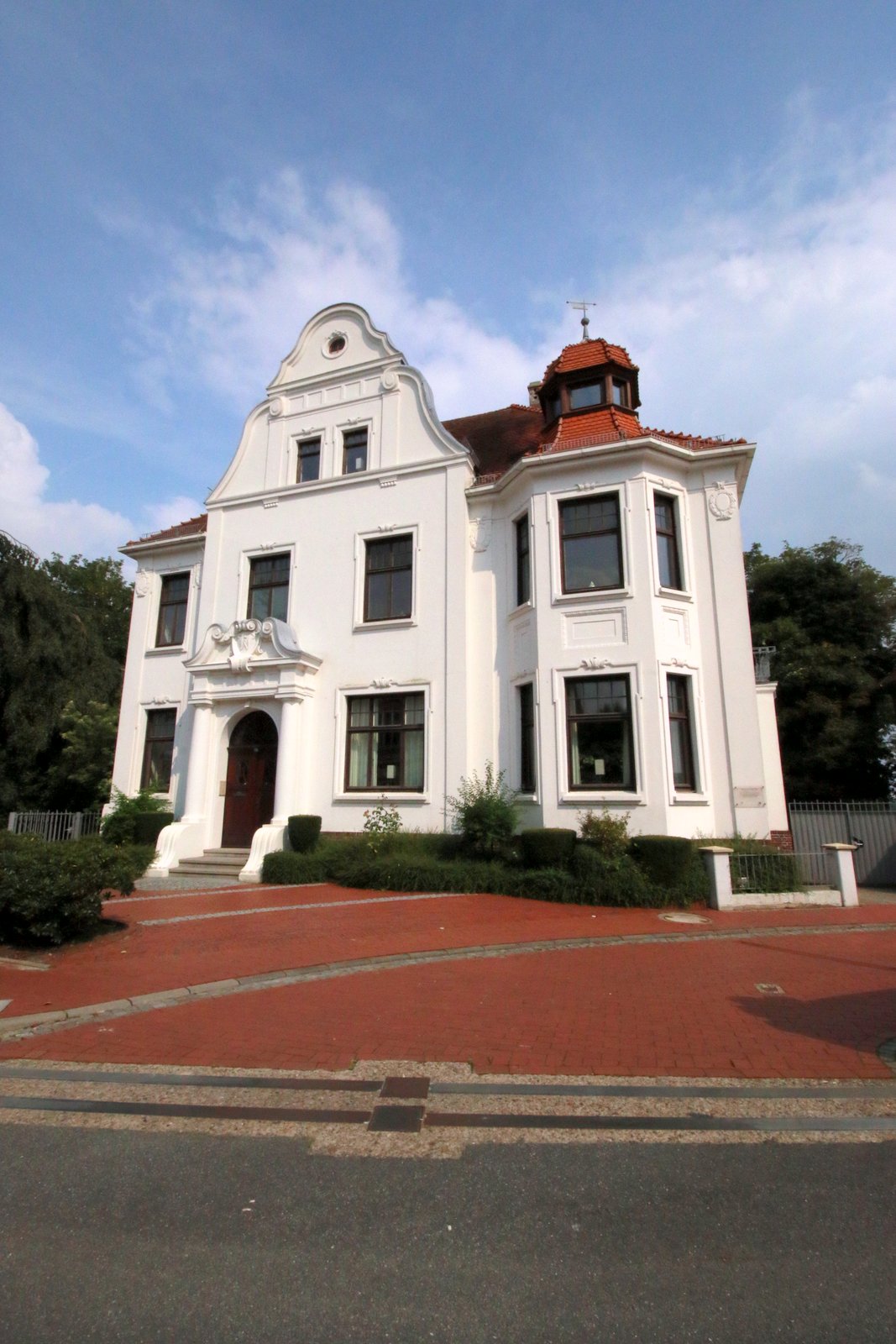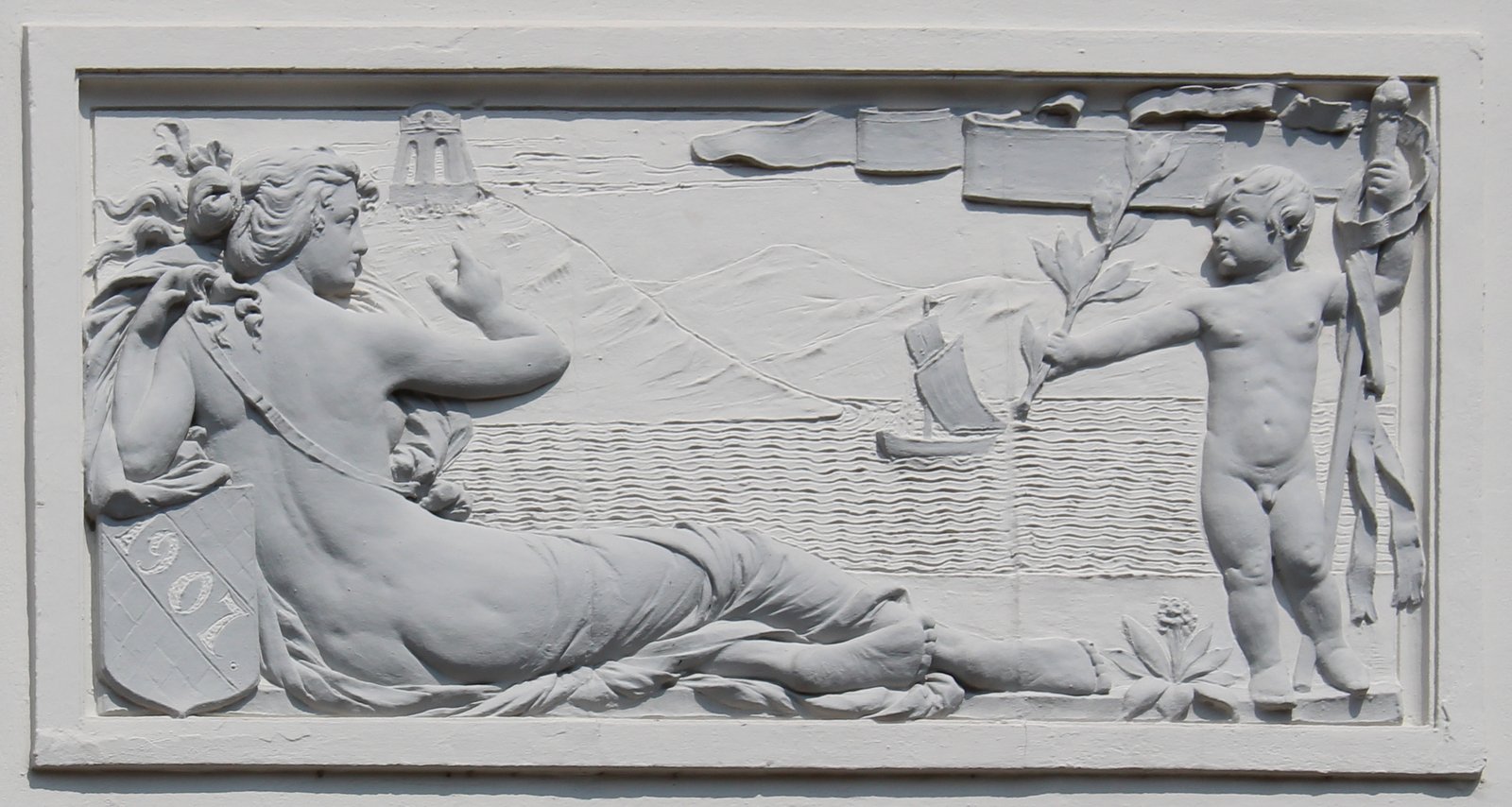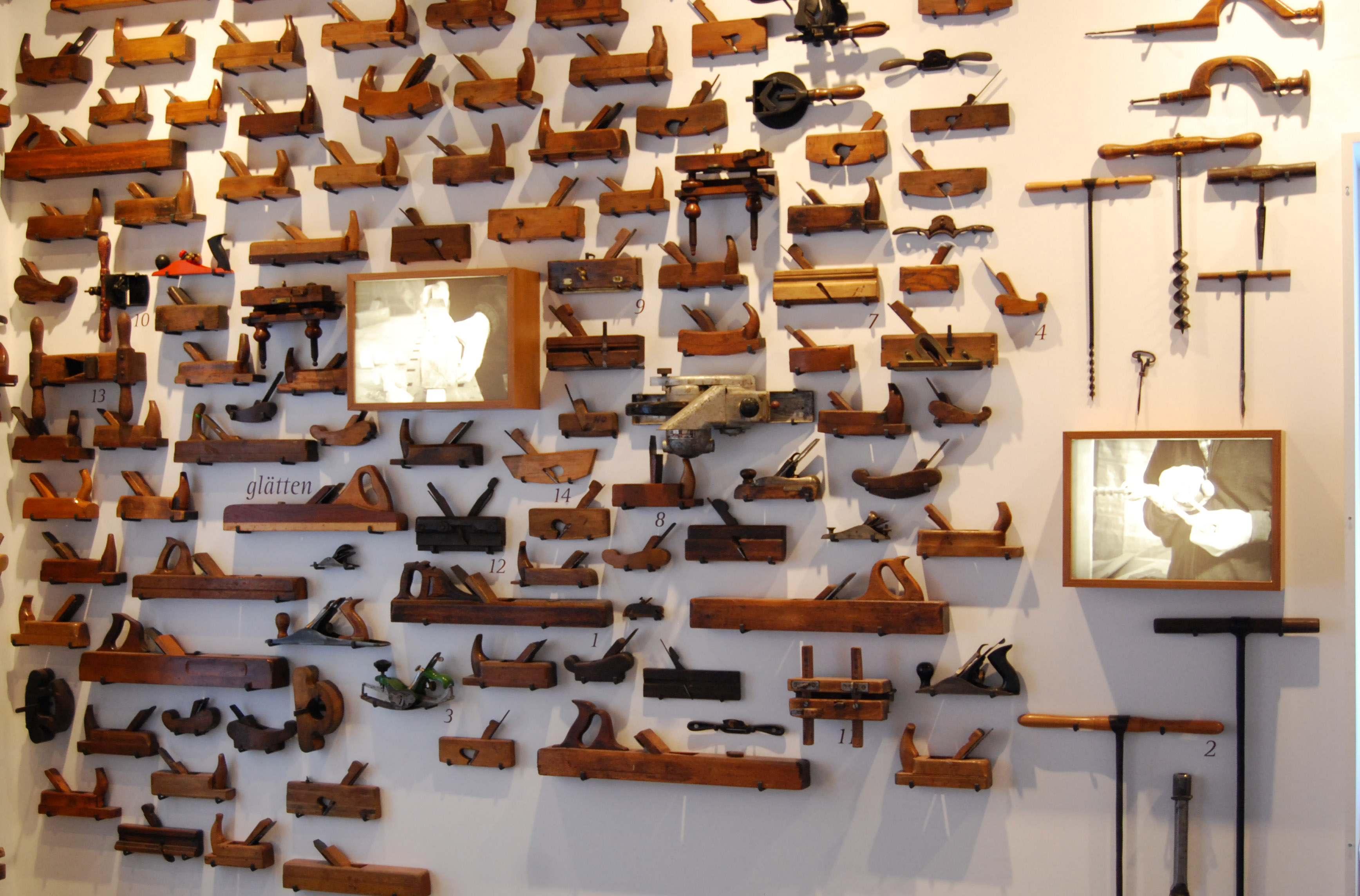
Bewerten
53f2f601-1d10-40b8-b325-1f7dbb9d6342|0|.0|96d5b379-7e1d-4dac-a6ba-1e50db561b04
The art nouveau villa with the crest above the impressive gateway belonged to the wood trader Wilhelm Plassmann (1852-1931). In 1907, he commissioned its construction by the architects Hans and Heinrich Lassen from Bremen. Actually, it was his second residential house in Brake. Wood trading was a flourishing industry. Plassman supplied above all the numerous shipyards of wooden ships with his highly desired construction material – such as, for example, the shipyard of Ide Oltmann in the immediate vicinity. However, even the suppliers of the shipyards as well as many building and carpentry business were among his customers.
Around 1900, the affluent class in Brake began copying the British style of living with great enthusiasm. Even today, the villas document the wealth once prevalent in the maritime city of Brake.
Succesful
Having the work and the customers right at the front door? For Wilhelm Plassmann (1852-1931) that was no Problem. The successful wood trade built his second villa according to the style of the “moderate reform architecture” and in close vicinity to the sluice. Plassmann supplied the shipyards of Brake, including the immediately adjacent Oltmanns´ shipyard, primarily with wood. As is demonstrated by the quality of his first villa, an imposing house located at the end of the street Mitteldeichstrasse, Plassman´s company was crowned by success.
On the Trail of the Nobel
The buorgeois of the 19th century enthusiastically emulated the lifestyles of the nobility. The villa was designed for societal life at the turn of the century. In accordance with the British role model, the rooms were grouped in a specific sequence around the middle of the house, an area dominated by a prestigious hall, paneling or a decoratively painted interior.
The ground floor was totally dedicated to social life. The private rooms were located in the first upper story. The business rooms, on the other hand, were in the basement. The functional separation also reflected the social boundaries existing between the landlord and the servants: Employees of the house were required to use a separate entry. The small and often unheated sleeping chambers of the servants were located directly beneath the roof.
Noticeably unobtrusive Wealth
 Germania
For his second villa, Plassmann engaged the architects Hans and Heinrich Lassen of Bremen in 1907. Indeed, it was already his second impressive residential house in Brake. The first one is a bourgeois gabled house made of bricks and having a cross-shaped layout. On the other hand, the second villa is in the style of the so-called “moderate reform architecture” and distinguishes itself from the classical villa which is marked by a cubic form and a symmetrically stringent facade. Around 1900, the new villas of Brake´s upper class displayed a relatively loosened form. The upper middle class living culture of the British of the era was constantly being copied. These eclectic preferences of the bourgeois were articulated in the form elements of prior building styles: buttresses, gables, bay windows, small corner towers, balconies and so forth. The Villa Plassman has a plastered façade with art nouveau décor. An escutcheon containing the monogram of the owner WP (Wilhelm Plassmann) is located above the baroque portal.
Germania
For his second villa, Plassmann engaged the architects Hans and Heinrich Lassen of Bremen in 1907. Indeed, it was already his second impressive residential house in Brake. The first one is a bourgeois gabled house made of bricks and having a cross-shaped layout. On the other hand, the second villa is in the style of the so-called “moderate reform architecture” and distinguishes itself from the classical villa which is marked by a cubic form and a symmetrically stringent facade. Around 1900, the new villas of Brake´s upper class displayed a relatively loosened form. The upper middle class living culture of the British of the era was constantly being copied. These eclectic preferences of the bourgeois were articulated in the form elements of prior building styles: buttresses, gables, bay windows, small corner towers, balconies and so forth. The Villa Plassman has a plastered façade with art nouveau décor. An escutcheon containing the monogram of the owner WP (Wilhelm Plassmann) is located above the baroque portal.
A special Greeting
The ornamental depiction of the „reclining Germania“ located on the side of the Building is not only a sign of great wealth, it I also a political statement. Plassmann, who was unhappy with the requirements of Brake´s Administration, did not hesitate in this regard – the Germania is pointing her bare buttocks old the City Hall of the era. Unfortunately, the response of the municipal officers to this particularly calculated act of impertinence is not known. Other bourgeois building owners in Brake apparently did not seem to have this problem, given that they refrained from displaying such bold depictions on their houses.
Experiences in the museum
Before iron and steel prevailed as building materials for ships, wood was the most important material, period. Wood was indispensable, together with other materials, such as sail cloth, tow , and tar.
A glimpse into the diversity of traditional wood shipbuilding can be had at Borgstede & Becker House. At Elsfleth House you’ll find an exhibition of shipbuilder’s tools and a section on modern steel shipbuilding.
More information on shipyards can be found at the Oltmanns station.
Maritime Museum - "Haus Borgstede & Becker", Breite Straße 9, 26919 Brake - 2nd floor
Haus Elsfleth, Weserstraße 14, 26931 Elsfleth - Erdgeschoss und 1. Stock
Oltmanns, Am Schleusendeich 2, 26919 Brake
